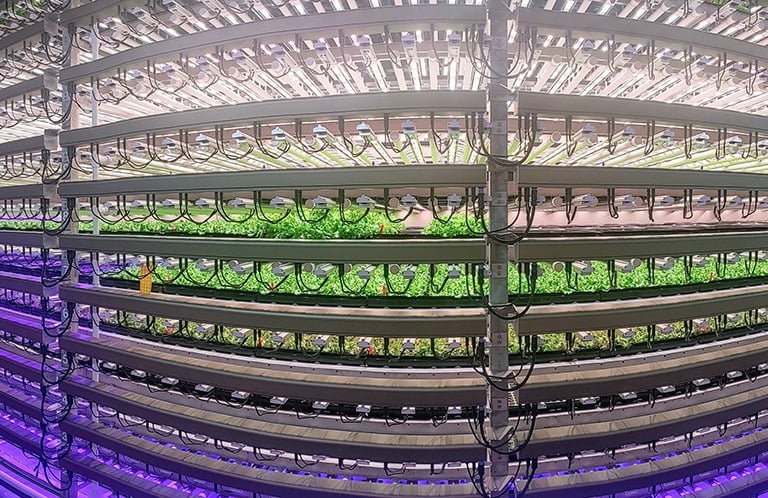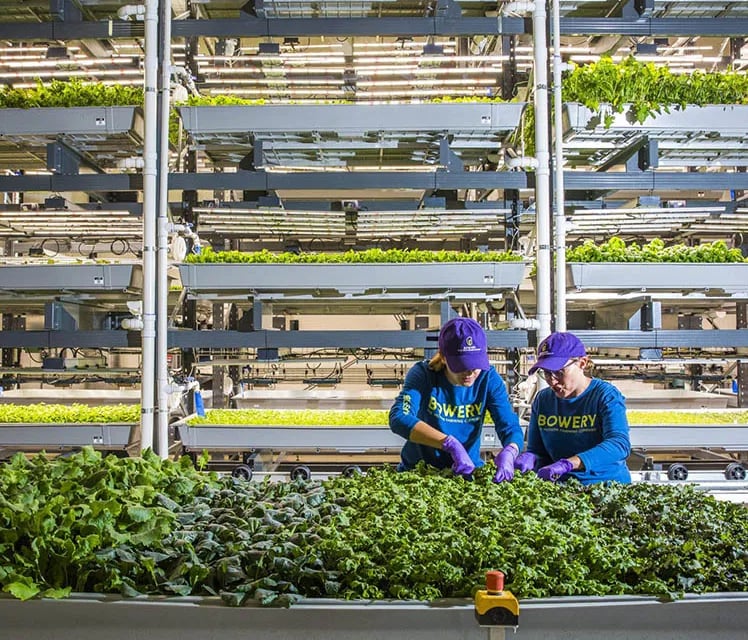For Space-Age Urban Farming
Space Agriculture for Earthly Cities
For humanity to become an interplanetary species, we must solve a fundamental challenge: how to feed ourselves in hostile and distant environments like the Moon or Mars. It is impossible to carry all our food from Earth. Therefore, agriculture in space is not a luxury, but a critical necessity for the self-sufficiency and survival of astronauts on long-duration missions. NASA's research, through programs like "Veggie" on the International Space Station, has pioneered Controlled Environment Agriculture (CEA), perfecting techniques to grow nutritious plants with maximum efficiency of water, light, and space.
Our proposal brings this cutting-edge technology, born from the need to survive in space, directly to the heart of our cities. We implement modular vertical farms that are a direct application of NASA's CEA systems. These high-efficiency modules can transform any unused urban space—from a rooftop to an abandoned warehouse—into a production center for fresh, nutritious food. In doing so, we are not just solving a logistical problem; we are building a more resilient, healthy, and equitable urban future by eradicating food deserts and creating a hyperlocal, sustainable food supply chain for all citizens.




Our proposal for food security
Food Security: Fusing Ancestral Wisdom with Predictive Analytics
The foundation of Mayan civilization was its deep, symbiotic relationship with the land, best exemplified by the "milpa." Far more than a simple farming plot, the milpa is a sophisticated agro-ecological system built on synergy and resilience. In this traditional model, cornerstone crops like corn, beans, and squash are planted together, creating a mutually beneficial ecosystem where each plant supports the others—a philosophy of natural efficiency that sustained communities for centuries.
Inspired by this ancestral wisdom, our approach to modern food security emulates the core principles of the milpa. We translate this philosophy of interconnectedness into the digital age by harnessing the power of advanced predictive analytics and rich Earth observation data from sources like NASA. Just as the Mayans observed the seasons to anticipate their harvests, we utilize complex machine learning models to decode the intricate relationships between climate variables and agricultural productivity.
Technically, our approach mirrors the synergy of the milpa, where each crop serves a specialized function for the collective good. Analogously, we employ an integral analytical portfolio that combines distinct machine learning models. A deep learning architecture (CNN-BiLSTM-Attention) provides high-precision forecasts, answering the question, "What will happen?" with crop yields. Concurrently, interpretable models like Random Forest and K-Means allow us to understand, "Why did it happen?" by identifying the most critical climatic factors and uncovering the "archetypes" or climate signatures that determine a season's success or failure. This synergistic combination of prediction and explanation is our "digital milpa": a system where the interaction of technological components generates a far more robust and complete understanding of agricultural risk.
This fusion of ancient ecological strategy and cutting-edge data science provides an unprecedented tool for decision-making. By transforming complex climate data into clear, actionable insights on crop yield and vulnerability, we aim to build a modern, data-driven framework for ensuring a stable, resilient, and sustainable food supply for future generations.


